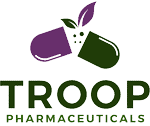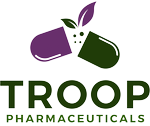What Is Anemia?
Anemia (or anaemia) is a condition in which the RBC count or hemoglobin levels drop below normal levels.
Anemia happens when your body doesn’t have enough healthy red blood cells. The condition is mainly caused by blood loss, the destruction of red blood cells, or your body’s inability to create enough red blood cells.
RBCs help transport oxygen to all parts of your body. Hemoglobin, an iron-rich protein present in RBCs, imparts the red color to the blood cells. It also helps bind oxygen, fight infections, and prevent blood loss by inducing blood clotting. Anemia results in less oxygen reaching various parts of your body. As a result, you develop the following symptoms;
- Fatigue
- Weakness
- Paleskin
- Shortness of breath
- Cold hands and feet
- Headache
- Dizziness
- Brain fog
- Chest pain
- Hairloss
- Irregular heartbeat
- Low stamina
- Difficulty concentrating
Causes Of Anemia
A drop in RBC count or haemoglobin can occur due to three main reasons:
- Your body is not producing enough RBCs.
- RBCs are getting destroyed by your body.
- Blood loss due to menstruation, injury, or other causes of bleeding.
Types Of Anemia
• Iron Deficiency Anemia
Iron deficiency anemia is the most common type of anemia. Iron is essential for human beings to produce hemoglobin. Blood loss,
poor diet, and your body’s inability to absorb iron from food can lead to iron deficiency. As a result, your body fails to produce enough hemoglobin, which leads to anemia.
• Aplastic Anemia
This type of anemia is caused when your body doesn’t produce enough red blood cells (RBCs). RBCs are produced in the bone marrow every 120 days. When your bone marrow fails to produce RBCs, the blood count falls and leads to anemia.
• Sickle Cell Anemia
Sickle cell disease, a serious blood disorder, causes sickle cell anemia. The red blood cells are flat disc-shaped or sickle-shaped in this type of anemia. The RBCs contain abnormal hemoglobin, known as the sickle cell hemoglobin, which imparts the abnormal shape to them. Sickle cells are sticky and can block blood flow.
• Haemolytic Anemia
This type of anemia is caused when the red blood cells are destroyed before their normal lifespan is over. The bone marrow is unable to produce new RBCs fast enough to meet the body’s demand.
• Vitamin B12 Deficiency Anemia
Like iron, vitamin B12 is also needed for the proper and adequate production of hemoglobin. Most animal products are rich in vitamin B12. But if you are vegetarian or vegan, you may have vitamin B12 deficiency. This can inhibit hemoglobin production
in your body, resulting in anemia. This type of anemia is also known as pernicious anemia.
• Thalassemia
Thalassemia is an inherited genetic disorder in which the body doesn’t create enough red blood cells. As a result, people with thalassemia can have mild to severe anemia.
• Fanconi Anemia
Fanconi anemia is a rare genetic blood disorder that leads to bone marrow dysfunction. Fanconi anemia prevents the bone marrow from producing enough RBCs. It can also cause the bone marrow to produce abnormal RBCs. This can result in cancer and affect the organs and tissues of your body. Children who inherit Fanconi anemia have birth defects.
• Blood Loss Anemia
Excessive bleeding during menstruation or bleeding caused by injury, surgery, cancer, or urinary tract or digestive tract dysfunction can lead to blood loss anemia.
Risk Factors Of Anemia
- Women and children are more prone to developing anemia than men.
- Anemia in pregnancy is common but should not be left untreated.
- Candida infection can prevent your body from absorbing B vitamins, and vitamin B12 deficiency can lead to anemia.
- Digestive issues like Crohn’s disease, ulcers, and IBS can cause anemia.
- Taking pain medications frequently can also be a risk factor for anemia.
- People over 65 years of age can develop anemia.
Diagnosis
Looking at the signs, symptoms, and risk factors of anemia, you may jump to the conclusion that you have anemia. That may not be true. Here’s how you can find out if you have anemia.
Here are the steps that your doctor will take to confirm if you have anemia.
- Family History
Since a few types of anemia are genetic, your doctor may want to know if anyone in your family has anemia.
- Physical Exam
Listen to your heart beat to know if there is any irregularity.
Listen to your lungs to check if your breathing is uneven.
Feel your abdomen to check the size of your spleen or liver.
- Complete Blood Count
Complete blood count test checks your hemoglobin and hematocrit levels. It also checks RBCs, WBCs, platelet count, and Mean Corpuscular Volume (MCV).
- Other Tests
Your doctor may ask you to get a reticulocyte test (number of young RBCs)
Natural / Home Remedies To Treat Anaemia
A diet rich in iron, B vitamins, and vitamin C is recommended for anemia. Be sure to talk to your healthcare provider about supplements as well.
The best diet plan for anemia includes foods rich in iron and other vitamins essential to hemoglobin and red blood cell production. It should also include foods that help your body absorb iron better.
There are two types of iron in foods: heme iron and nonheme iron.
Heme iron is found in meat, poultry, and seafood. Nonheme iron is found in plant foods and foods fortified with iron. Your body can absorb both types, but it absorbs heme iron more easily.
The Recommended Daily Allowance (RDA) for iron is 10 milligrams (mg) for men and 12 mg for women.
Although anemia treatment plans are individualized, most require 150 to 200 mg of elemental iron daily. You’ll likely need to take prescription iron or an over-the-counter iron supplement until your levels are replenished.
Add these foods to your diet to get more iron and help fight iron deficiency anemia:
1. Leafy greens
Leafy greens, especially dark ones, are among the best sources of nonheme iron. They include:
- spinach
- kale
- collard greens
- dandelion greens
- Swiss chard
Some leafy greens such as Swiss chard and collard greens also contain folate. A diet low in folate may cause folate deficiency anemia. Citrus fruits, beans, and whole grains are good sources of folate.
When eating dark, leafy greens for iron, there’s a catch. Some greens high in iron, such as spinach and kale, are also high in oxalates. Oxalates can bind with iron, preventing the absorption of nonheme iron.
So while it’s beneficial to eat your greens as part of an overall anemia diet, don’t depend on them solely to treat the condition.
Vitamin C helps your stomach absorb iron. Eating leafy greens with foods that contain vitamin C such as oranges, red peppers, and strawberries may increase iron absorption. Some greens are good sources of both iron and vitamin C, such as collard greens and Swiss chard.
2. Meat and poultry
All meat and poultry contain heme iron. Red meat, lamb, and venison are the best sources. Poultry and chicken have lower amounts.
Eating meat or poultry with nonheme iron foods, such as leafy greens, along with a vitamin C-rich fruit can increase iron absorption.
3. Liver
Many people shy away from organ meats, but they’re a great source of iron.
Liver is arguably the most popular organ meat. It’s rich in iron and folate. Some other iron-rich organ meats are heart, kidney, and beef tongue.
4. Seafood
Some seafood provides heme iron. Shellfish such as oysters, clams, scallops, crabs, and shrimp are good sources. Most fish contain iron.
Fish with the best levels of iron include:
- canned or fresh tuna
- mackerel
- mahi mahi
- pompano
- fresh perch
- fresh or canned salmon. Although canned sardines are good sources of iron, they’re also high in calcium. Calcium may bind with iron and reduces its absorption. Foods high in calcium shouldn’t be eaten at the same time as iron-rich foods. Other examples of calcium-rich foods include:
- dairy milk
- fortified plant milks
- yogurt
- kefir
- cheese
- tofu
5. Fortified foods
Many foods are fortified with iron. Add these foods to your diet if you’re a vegetarian or struggle to eat other sources of iron:
- fortified orange juice
- fortified ready-to-eat cereals
- foods made from fortified refined flour such as white bread
- fortified pasta
- foods made from fortified cornmeal
- fortified white rice
6. Beans
Beans are good sources of iron for vegetarians and meat eaters alike. They’re also inexpensive and versatile.
Some iron-rich options are:
- kidney beans
- chickpeas
- soybeans
- black-eyed peas
- pinto beans
- black beans
- peas
- lima beans
7. Nuts and seeds
Many types of nuts and seeds are good sources of iron. They taste great on their own or sprinkled on salads or yogurt. Some nuts and seeds that contain iron are:
- pumpkin seeds
- cashews
- pistachios
- hemp seeds
- pine nuts
- sunflower seeds
Both raw and roasted nuts have similar amounts of iron.
Almonds are also a good source of iron. They’re great as part of a healthy eating plan, but since they’re also high in calcium, they may not increase your iron levels that much.
Takeaway
No single food will cure anemia. But eating an overall healthy diet rich in dark, leafy greens, nuts and seeds, seafood, meat, beans, and vitamin C-rich fruits and vegetables can help you get the iron you need to manage anemia.
Be sure to discuss supplements with your healthcare provider because it’s difficult to get enough iron from diet alone.
When following a diet plan for anemia, remember these guidelines:
- Don’t eat iron-rich foods with foods or beverages that block iron absorption. These include coffee or tea, eggs, foods high in oxalates, and foods high in calcium.
- Eat iron-rich foods with vitamin C-rich foods, such as oranges, tomatoes, or strawberries, to improve absorption.
- Eat iron-rich foods with foods that contain beta carotene, such as apricots, red peppers, and beets, to improve absorption.
- Eat a variety of heme and nonheme iron foods throughout the day to up your iron intake.
- Eat heme and nonheme iron foods togetherwhenever possible to increase iron absorption.
- Add foods rich in folate and vitamin B-12 to support red blood cell production.
Written by: Ore Okebukunola




